- About
- Topics
- Picks
- Audio
- Story
- In-Depth
- Opinion
- News
- Donate
-
Signup for our newsletterOur Editors' Best Picks.Send
Read, Debate: Engage.
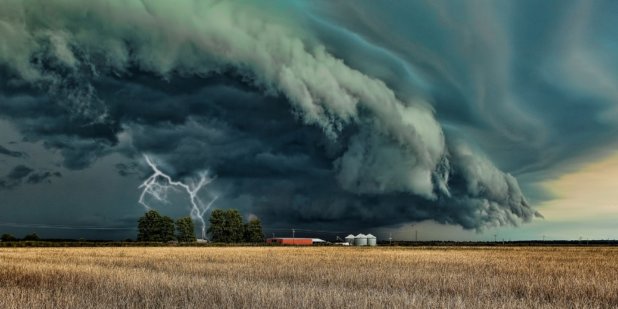
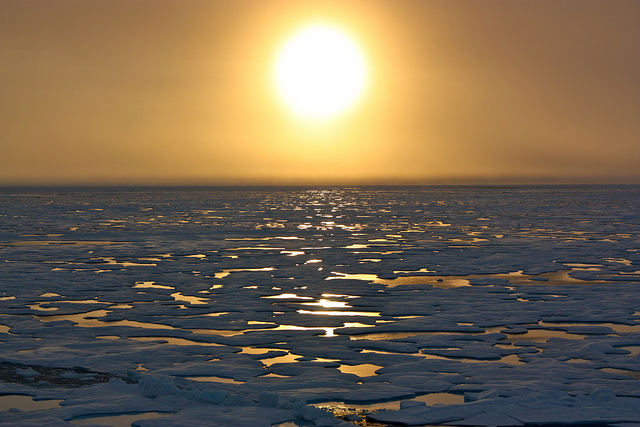
fairplanet: Mr. Kunstmann, recent climate forecasts look gloomy. Many experts say we will not meet the 2-degree goal, and the rise of the seas can't be stopped anymore. Can we still save the planet?
Kunstmann: Well, there's no easy answer. First of all, the debate on climate change is usually shortened to the 2-degree target and the rise of the sea level, because it shows the desired goal as well as one of the biggest problems in a compact and vivid way. The 2-degree goal has made it into the final document of the World Climate Conference 2015 in Paris. And there is also the even more ambitious goal of the 1.5 degrees up to the year 2100.
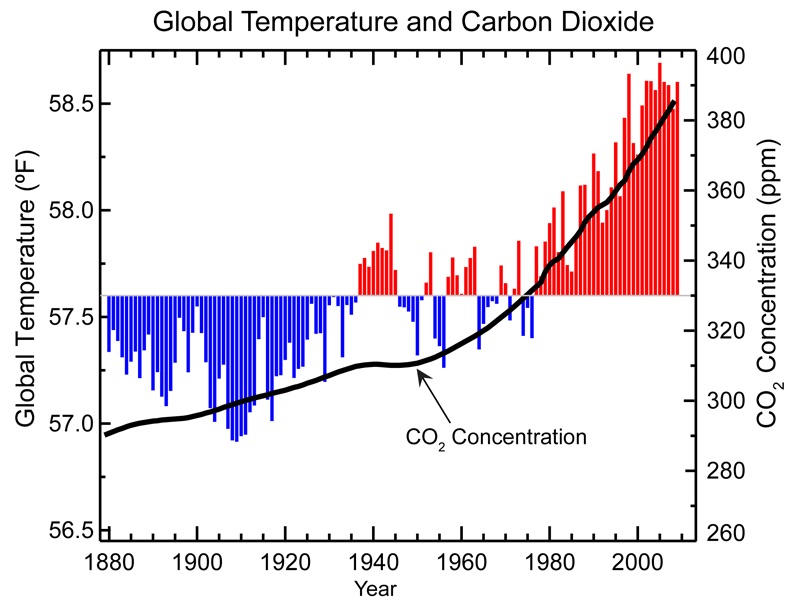
Chart: National Climatic Data Center
However, we should be aware that these targets are based on the data from the beginning of industrialization. As for today, we have already reached an increase of one degree. So only 0.5 to 1 degrees to the end of the century, as global average, are left - a truly ambitious goal.
You emphasize the fact that this is a global mean.
Yes, because climate change is not a uniform, homogenous rise in temperature. Above the great land masses the rise in temperature is higher than above the surface of the sea. The water masses of the oceans absorb a large part of the heat, and water reacts much slower to temperature fluctuations compared to the air. At cold spells, for example, sea water acts like a giant heat storage. Conversely, summer heat is much better to bear at the coast because the water then has a cooling effect.
What about the rising sea level?
As for today, we are assuming that the sea level will rise by about half a meter at a temperature rise of 2 degrees. It is said that this magnitude could still be handled. What is often ignored here is that the melting of the pole caps is only partly responsible for the rise of the sea. Another part is due to the so-called "thermal expansion", which means that water increases in volume as it heats up.
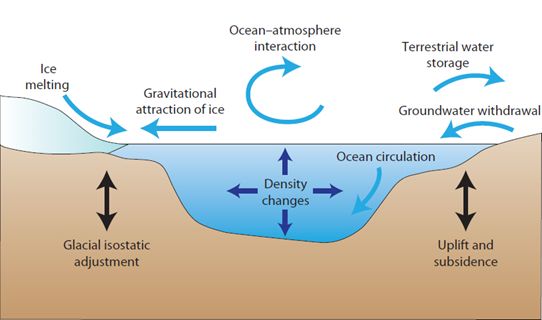
U.S. Fishing and Wildlife Service
If our atmosphere gets hotter, not only the ice masses melt, but also the entire water of the oceans expands - and the sea level rises as a result.
The consequences would be serious.
That's right, especially for people who live directly by the sea. Many of the global megacities are located in close proximity to the coast or at large river deltas. But not only the cities are threatened by storm floods, also the rural population is at risk, directly through the floods of course, but also indirectly through the salinisation of near-coastal agricultural areas, which has consequences for agriculture and therefore for the food security of many, many people.
"Basically, the extreme weather phenomena are likely to intensify, both in terms of extreme" droughts and extreme precipitation."
And these weather phenomena are far more difficult to predict. In West Africa, for example, the beginning of the rainy season has shifted by about 3 weeks in the last 20 years.
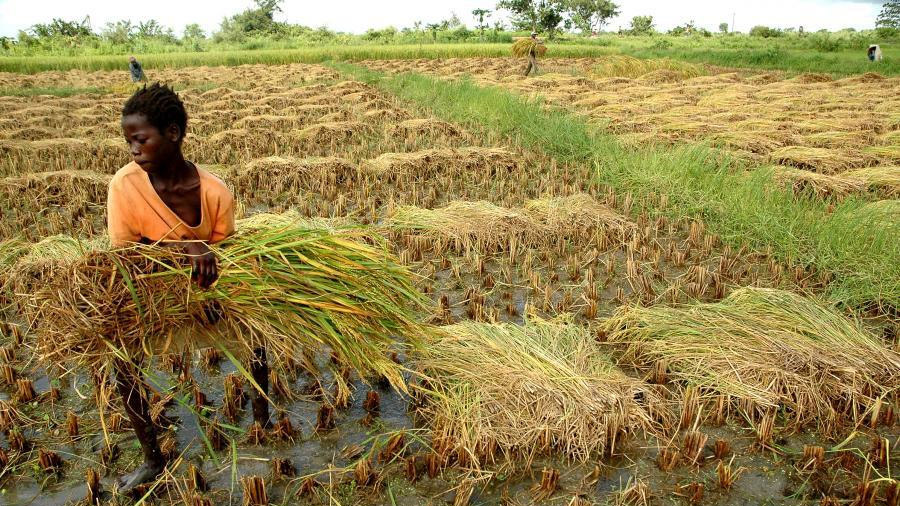
This is a great problem for the farmers; They risk their crops if they sow too early or too late - and traditional methods to find the optimal time to sow are no longer valid.
According to the latest research results, what are the main causes of climate warming?
Well, the effects of carbon dioxide and methane are well known and proven. These two gases spread very quickly in the atmosphere, resulting in a warming of the lower parts of the atmosphere.
You mean the sealing of green areas by concrete, for example for commercial areas …
No, that's too small-scale, you should rather see it on a larger scale: the conversion of forest areas into agricultural areas or the massive urbanization as in today's China or India.
To understand this, perhaps a small-scale example. In terms of land surface change, the question of what happens with the solar radiation is crucial. If sun rays hit land, they are partly reflected directly and partly absorbed and converted into heat. A well-known phenomenon: if you wear a black shirt it gets hotter than when you wear a white shirt - because black absorbs sunrays much more than white does. However, when sunrays hit water surface, they are partly reflected and partly result in the evaporation of water, which requires energy, and therefore has a cooling effect locally. It's the same with the moisture in the soil; It regulates how much energy is converted into perceptible heat and how much in evaporation. But if everything is concreted and sealed, this natural warming regulation just doesn't work.
That is why near-natural land surfaces are so important. An intact vegetation with regulating soil moisture can have a great positive effect on the local climate.
What about your personal assessment? Can the 2-degree goal still be achieved?
To be honest, I'm not that optimistic. I think it'll be very, very difficult. Despite all the scientific findings and the countless publications, documentations and campaigns, there is simply no trend reversal in emissions.
"The most disturbing fact is: last year, we had a level of emissions worldwide that exceeded even the most pessimistic scenario of our estimates."
According to that, in the year 2100 we would find ourselves, on average, at values of 4-5 degrees or even higher. This would mean a rise in sea level by several meters.
At the World Climate Conference in Paris in 2015, the two-degree goal was a big issue.
But the problem is, at the World Climate Conference nobody was specific about how all these goals should be achieved. All of the previous climate protection inputs from the contributing countries are not yet enough to reach 2° C, they're more likely to end up at 3° C in 2100. What we need is a giant leap, so to speak.
What would be a giant leap here?
Let's take air pollution, for example. Last year, there was a discussion in Germany about diesel engines. Their nitrogen oxide emission is highly problematic.
There have been (and still are) considerations to prohibit diesel engines completely in the cities. This would be a giant leap, but it would be "radical" – and any politician who wants to be re-elected will be careful to tackle something radical.
The same is true for climate protection. In Germany, we want to reduce our emissions by 40% compared to the level of 1990. At the moment we are at 27%. And this is only because the reference year 1990 was very advantageous due to the abolition of large industries in the former socialist East-Germany. In order to reach the remaining 13% over the next three years, major uncomfortable political decisions would have to be made that would challenge us personally at our daily routine - a giant leap, if you like.
These are indeed very pessimistic prospects.
A holistic approach is important, a kind of "development contract". We must recognize that climate change has long been underway. It is therefore important to promote both climate protection and adaptation to climate change, just like the United Nations' “Green Climate Fund”, for example.
"Climate protection and adaptation measures must be accompanied by measures for poverty reduction and education."
This is exactly what the world climate conference's final paper does. They were aware that one can not be achieved without the other.
You once referred to climate research as a battle of material. What did you mean?
Well, the higher the computer performance, the more precise the climate prediction. At our 'Campus Alpin' of the KIT in Garmisch-Partenkirchen, Germany, we use extremely powerful computers to calculate the highest-possible climate predictions for different regions worldwide.
In our models, we divide the atmosphere and the floor into grids. Cuboids are formed, from which, depending on the model, we calculate the values at the center or at the corner points. And the smaller the cuboids, the more precise the calculation. The number of variables to be calculated also increases with the quality of resolution. In each of these cuboids we calculate the changes for a minute into the future - up to 100 years in advance! So you can imagine the necessary computer performance here. This is why energy consumption is also a huge issue for us. At our institute in Garmisch-Partenkirchen we have an annual electricity bill of 10,000 euros
Equipment, the weather services in developing countries can only dream of.
Yes. And keep in mind, what huge amounts of data are generated. When we completed one of our research projects in West Africa, we were unable to send our data via the Internet. The data volumes were just too big for the local networks. We had to bring the hard disks physically – by car! - to the data center for climate research in Hamburg.
Is it true that the number of weather stations worldwide decreases despite all efforts to improve climate estimates?
Yes, it seems paradoxical, since the importance of climate research is now clear to everyone. In fact, the number of automatically measuring weather stations is more or less constant, but the number of stations that are not working automatically decreases worldwide. This is probably due to the fact that the gauges are often installed in remote areas, where data is collected manually only and at intervals of days or weeks, and the necessary maintenance work is carried out only irregularly - if at all. Many weather services are investing less and less in their infrastructure because they are hoping to switch to satellite data or radar measurements in the near future. But that would only be indirect measurements. The direct precipitation measurement with rain gauges on the ground is the backbone of meteorology and climate research. Therefore, the decline in such monitoring stations is dramatic, especially in Africa, where the infrastructure is weak. And, thus, the foundations for proper research are lacking both for weather forecasts and for long-term climate projections.
Precise weather forecasts are vital, especially in Africa …
Take Nigeria, for example. Nigeria is the most populous country in Africa and is regarded as the economic powerhouse of West Africa. But from Nigeria, we are now receiving no more rainfall data at all!
Either the systems are now dismantled, perhaps stolen, or the data are no longer collected or simply not passed on; We do not know exactly. Corruption could be an issue, too
In 2010 a project called WASCAL was launched, in which you are also involved. What is it about?
WASCALmeans "West African Science Service Center on Climate Change and Adapted Land Use". It was developed in cooperation with the German Ministry of Education and Research and ten West African partner countries. An expertise should be set up in order to better adapt to climate change. This includes graduate training (Master and PhD) and various research programs in cooperation with German universities and research institutes. We at KIT's 'Campus Alpin' are particularly involved in climate and hydrology research.
"The aim is to establish and promote a concerted network of universities and weather services in the partner countries. This also includes the construction of new measuring stations and IT infrastructure. In return, already collected records of all countries will be freely available to the researchers."
Mr. Kunstmann, thank you very much for this interview.